Welcome to our Colossus Movie Guide for The Princess Bride. This guide contains our detailed library of content covering key aspects of the movie’s plot, ending, meaning, and more. We encourage your comments to help us create the best possible guide. Thank you!
What is The Princess Bride about?
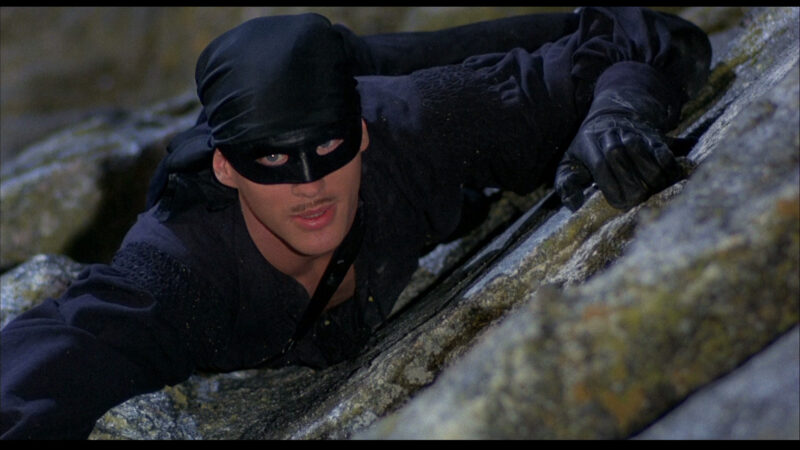
The Princess Bride is a wonder of a film that works beautifully on two different levels. The first, of course, being its enchanting story about true love between Westley and Buttercup, about Inigo’s quest to avenge his father. William Goldman, who wrote the source novel and the film’s screenplay, used a “only the good parts” approach that ignored all political and cultural commentary and purely focused on the emotional and dramatic elements driving those stories. In effect, The Princess Bride crafts a rhythm, an overall aesthetic matched by very few films. The movie truly captures the essence of a fairy tale and all the lessons we learn from them.
The movie excels further, however, with its second component: the grandfather reading to his grandson. At first, the sick grandson is skeptical of the story, dubious about the story’s central romance and corny title. But as the grandfather reads the fairy tale—the same fairy tale we see play out so engagingly with the “good parts” approach—we witness the timeless power of story in real time. Characters like Westley and Buttercup and Inigo create a connection between grandfather and grandson, between wildly different generations, between seemingly insurmountable time and space. Thus, the movie isn’t just a depiction of how fairy tales play out, but how children hear fairy tales and how adults tell fairy tales, how timeless lessons are passed from the mature to the young. There’s an ineffable connection forged by these transient moments that are quietly immortalized and forever impactful.
Movie Guide table of contents
Cast
- Cary Elwes – Westley/Dread Pirate Roberts/The Man in Black
- Robin Wright – Buttercup/The Princess Bride
- Mandy Patinkin – Inigo Montoya
- André the Giant – Fezzik
- Chris Sarandon – Prince Humperdinck
- Christopher Guest – Count Tyrone Rugen
- Willoughby Gray – The King
- Wallace Shawn – Vizzini
- Mel Smith – The Albino
- Margery Mason – The Ancient Booer
- Malcolm Storry – Yellin
- Billy Crystal – Miracle Max
- Carol Kane – Valerie
- Peter Cook – The Impressive Clergyman
- Fred Savage – The Grandson
- Betsy Brantley – The Mother
- Peter Falk – Grandpa/The Narrator
- William Goldman – Writer
- Rob Reiner – Director
The ending of The Princess Bride explained
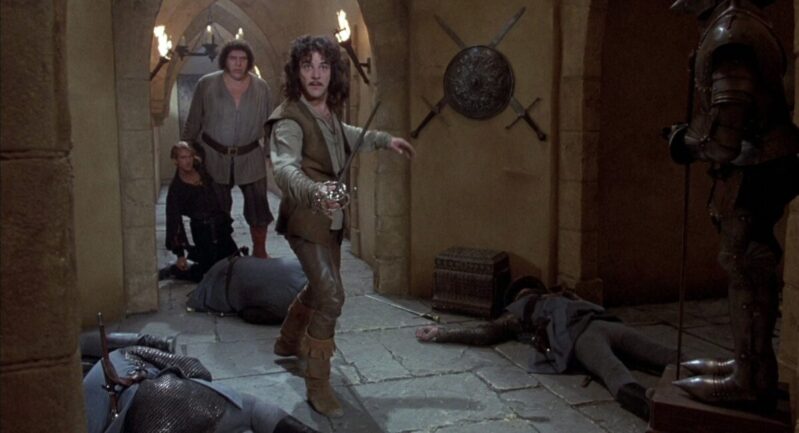
A recap of The Princess Bride’s ending
Let’s start with the scene where Westley, Inigo, and Fezzik storm the castle to rescue Buttercup, who is about to be forcibly married to Prince Humperdinck. As they embark on their mission, the movie’s two biggest plot threads reach their peaks.
Inigo finally confronts his father’s murderer, Count Rugen, fulfilling his long-standing vow for revenge against the man who killed his father. Inigo initially confronts Count Rugen, uttering the phrase, “My name is Inigo Montoya. You killed my father. Prepare to die.” Count Rugen then runs away, and Inigo chases after. Count Rugen sneakily waits in a chamber and throws a knife into Inigo’s stomach as he turns the corner. Just as we think it’s the end of Inigo, he musters the strength to fight Count Rugen anyway, repeating that same phrase over and over. As he speaks, he gains more and more strength, before finally killing Count Rugen.
Meanwhile, Westley reunites with Buttercup in her bridal chamber. Despite being physically weakened and unable to stand, Westley’s sheer willpower and love for Buttercup enable him to confront Humperdinck. Instead of a violent clash, the resolution comes through Westley’s psychological dominance as he bluffs Humperdinck into surrender without a physical fight. Buttercup then ties Count Rugen up, and all four of them escape the castle.
As the four heroes ride off into the dawn, the story comes full circle with the return to the frame narrative. The boy, initially dismissive of the story, is now so enchanted that he requests his grandfather to read it again. The grandfather agrees to return the next day to re-read the story, ending the movie with the phrase from the story, “As you wish.”
The Princess Bride and the timeless power of storytelling
In order to properly understanding the ending, I think we first need to consider William Goldman’s goals with his story, with a particular focus on the grandfather-grandson dynamic of the film. As far as the fairy tale plot goes, the story is pretty simple and there’s not much to understand in the end. But when we take an aerial view of the story and understand its parts, we can observe the magical beauty that makes Goldman’s story such an important part of so many people’s lives. In this explanation, we’ll discuss how Goldman’s approach reshapes our understanding of traditional fairy tale elements and asks us to consider our relationship with the genre and storytelling in general.
Ultimately, The Princess Bride stands as a unique deconstruction of fairy tales, both in its original novel form—a 1973 book entitled The Princess Bride: S. Morgenstern’s Classic Tale of True Love and High Adventure, The “Good Parts” Version—and in its film adaptation. When he originally wrote novel, Goldman’s goal was to create a story that blended the enchantment of fairy tales with modern sensibilities. Inspired by his daughters’ request for a story about “princesses” and “brides,” he set out to craft a narrative that retained the essence of classic fairy tales—but approached it from a unique angle by challenging conventional tropes found in fairy tales. He introduced characters like Princess Buttercup and the Dread Pirate Roberts, who, at first glance, fit the archetypical roles: damsel in distress, fearsome pirate. But as the story unfolds, our heroes gain depth and complexity, moving beyond the stereotypical roles we’ve grown to expect.
The novel also pokes fun at the overly simplistic moral structures and plot devices typical in fairy tales. Goldman imbues his story with a self-awareness that allows it to recognize its fairy tale roots while simultaneously critiquing and expanding upon them. This meta-narrative aspect, particularly the concept of a story being read to a child, adds another layer to the deconstruction, as it allows for commentary and reflection within the narrative itself.
In adapting The Princess Bride to film, Goldman carried over these goals, ensuring that the movie retained the novel’s essence of deconstructing fairy tales. The characters are largely the same and carry the same deconstructive power they hold in the novel. But in movie form, their personalities gain color and movement. Cary Elwes, Robin Wright, Mandy Patinkin, André the Giant—the list goes on and on, so I’ll stop there—all bring such life to Goldman’s vision. They feel familiar in the fairy tale setting, yet their oversized, archetypical personalities often make us aware of just how ridiculous fairy tales truly are. It’s never a mocking tone, but a loving one—a celebration of what fairy tales can accomplish.
Which brings us to the grandfather who’s reading the story to his grandson. This element of the film differs from the source novel and serves as visual narrative device through which Goldman deconstructs traditional fairy tales. This framing story—with its intergenerational dialogue, with its self-referential humor, with its commentary on the events unfolding in the fairy tale world—provides a unique platform for exploring and challenging the conventions of fairy tales. In effect, this device underscores the film’s awareness of its place within the fairy tale tradition, even as it seeks to redefine it.
The grandson in the frame story acts as a surrogate for the audience, particularly the modern, younger viewers who might be skeptical of traditional fairy tales. His initial reluctance to engage with the story (“Is this a kissing book?”) reflects a common contemporary attitude towards fairy tales as outdated or overly simplistic. This skepticism sets the stage for the film to challenge and subvert these preconceptions. As the grandfather reads the story, their interactions allow for commentary and critique of the unfolding narrative. The grandson’s interruptions and questions highlight and poke fun at some of the more absurd or clichéd elements of fairy tales—but he also takes moments to note things that surprise him, such as when Westley “dies.” This commentary serves to acknowledge the genre’s roots while also highlighting its departures from the genre’s norms.
The dynamic also symbolizes the passing of stories and values from one generation to another, a key aspect of traditional fairy tales. However, in The Princess Bride, this is done with a critical, self-aware approach. The grandfather represents the tradition of storytelling, while the grandson represents a new, more questioning and discerning audience. Their interaction is a dialogue between these two worlds.
As a result of the grandfather-grandson dynamic, the very idea of a “fairy tale” is transformed. This real-world setting ends up adding a layer of realism and relatability to the story, as it grounds the fantastical elements of the fairy tale in a more familiar, everyday context. As the story progresses, the grandson’s attitude shifts from disinterest to engagement and concern for the characters. This evolution mirrors the journey of the audience as Goldman’s storytelling draws them in, despite their initial reservations about the fairy tale format. It demonstrates the enduring power of well-told stories to captivate and move, regardless of genre.
Thus, the ending of The Princess Bride, when viewed through the lens of the grandfather and grandson, reveals a profound message about the enduring nature of storytelling, the bridging of generations, and the evolution of narrative traditions. The ultimate message of the ending is about the timeless and evolving nature of storytelling. The Princess Bride asserts that stories are not static relics of the past but living, breathing entities that can adapt, change, and continue to captivate—and, in film form, they can literally come to life. The grandfather’s line, “As you wish,” which echoes Westley’s expression of love for Buttercup in the fairy tale, underscores this message with such charm and beauty.
The themes and meaning of The Princess Bride
William Goldman’s “good parts” approach
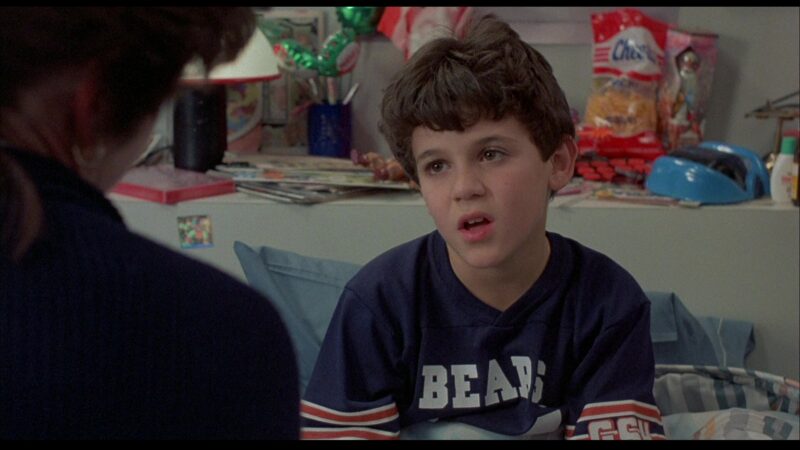
William Goldman’s approach to writing The Princess Bride was unique in its focus on what he termed the “good parts” (after all, the title of the original novel was The Princess Bride: S. Morgenstern’s Classic Tale of True Love and High Adventure, The “Good Parts” Version). This strategy originated from a simple, yet profound desire: to captivate his young daughters with an exciting story. This personal motivation not only shaped the novel but also laid the foundation for the film’s enduring appeal and its ability to connect people between generations.
In the novel, Goldman presents himself as an editor abridging an older, more extensive work by a fictional author, S. Morgenstern. He claims to include only the “good parts” that his own father read to him when he was a sick boy, omitting lengthy historical and cultural digressions that he deemed dull or irrelevant to the central story. This approach allowed him to focus on elements that drive the plot and engage the reader: adventure, romance, humor, action—you know, all that good stuff. By concentrating on the “good parts,” Goldman ensures the novel maintains a brisk pace and high engagement level—no easy feat in storytelling, and certainly a rarity when it comes to modern films. This technique helps sustain the magical and adventurous feel of the narrative, keeping readers hooked and invested in the characters’ stories.
In adapting the novel for the film, Goldman naturally carried over the “good parts” approach. The film distills the story further, focusing tightly on the adventure, the love story between Westley and Buttercup, and the colorful characters they encounter. This tight focus allows the film to maintain a quick pace and a coherent narrative. The film avoids lengthy exposition, which is often a pitfall in fantasy storytelling (and storytelling in general for movies). By cutting out what might be considered boring or unnecessary background information, the film retains a sense of wonder and keeps the audience engaged with the immediate story.
By focusing on the good parts, both the novel and the film preserve the magical quality of the fairy tale while making it more relatable and accessible to a modern audience. The story feels lively and compelling, capturing the essence of what makes fairy tales enduringly appealing. This approach improves storytelling efficiency, ensuring that every scene, character, and plot point directly contributes to the story’s emotional impact. This efficiency is particularly effective in the film, where runtime is limited, and scenes must be impactful and purposeful. The “good parts” focus keeps the audience consistently engaged, as there’s a constant forward momentum in the plot.
Now let’s circle back to Goldman’s ultimate intent with the “good parts” approach: entertaining his daughters. When Goldman set out to write a story for them, he aimed to capture their imagination and keep them enthralled. Children, with their shorter attention spans and hunger for excitement, are often the most demanding audience. They seek stories that are fast-paced, filled with adventure, romance, and humor—essentially, the “good parts.” In crafting a story for his children, Goldman distilled complex narratives down to their most engaging elements. This simplification was not about dumbing down the story but about honing in on the aspects most likely to spark and maintain a child’s interest.
Thus, The Princess Bride, in its focus on the “good parts,” transcends the barriers of age and time and becomes a story as much for adults as it is for children, filled with layers of meaning and enjoyment that can be appreciated at different stages of life. The film’s ability to captivate audiences parallels the way stories are passed down through generations. Just as Goldman wanted to entertain his daughters, adults who grew up loving The Princess Bride now share it with their own children, creating a bond over a shared love for an enchanting tale.
This cycle of sharing and enjoying this film has imbued The Princess Bride with a kind of generational timelessness. It’s a film that parents are eager to introduce to their children, knowing it will captivate them just as it did when they were young. Personally, I know my wife, who loved this film as a child, cannot wait to share The Princess Bride with our own children. I can sense it in her voice: she is so excited about that prospect. It’s so moving, so wonderful to witness such an attachment, such a yearn to recreate the connection she shared with the movie when she was young. The Princess Bride may never cease to have that hold over movie lovers, over those deeply affected by well-told stories.
What “true love” looks like
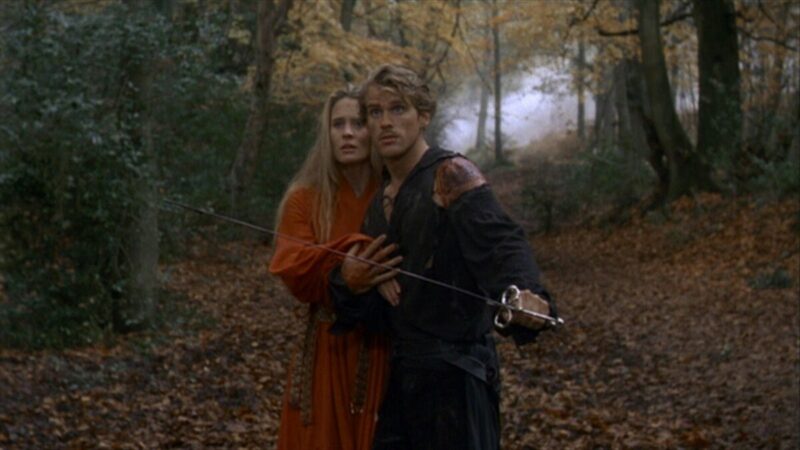
The theme of true love and romance in The Princess Bride is multifaceted, encompassing both the fairy tale romance of Westley and Buttercup and the meta-narrative perspective seen through the grandson’s evolving attitude toward love and romance in the story. The ending of the movie, when the grandfather says “As you wish,” brings catharsis to this thematic exploration. Let’s observe how the movie brings such power to this moment.
First, let’s focus on the “love” of our film: the romance between Westley and Buttercup. In the tradition of fairy tales, their love is portrayed as idealized and enduring, exemplified by Westley’s phrase, “As you wish.” It’s a classic example of love conquering all, surviving separation, presumed death, and unfathomable obstacles. Their triumph over these various challenges—such as Westley’s transformation into the Dread Pirate Roberts and Buttercup’s betrothal to Prince Humperdinck—reinforces the theme that true love is unstoppable and transcends even the most dire circumstances.
Their love gains complexity thanks to William Goldman’s satirical, meta approach to typical love stories in fairy tales. While the story initially seems to play into the common damsel-in-distress trope, it subverts it by giving Buttercup agency and making her an active participant in her story. Her and Westley’s love isn’t a one-sided affair—we witness each of them individually as they yearn to realize the “true love” shared between them. This twist on the classic romance makes it seem both familiar and modernized in its commentary on fairy tale tropes—and provides a perfect parallel for the grandfather reading the story to his grandson.
The grandson’s initial attitude towards the love story is dismissive and skeptical. He is representative of a modern audience that might view fairy tale romances as outdated or overly sentimental. But as the story progresses, the grandson becomes more invested in Westley and Buttercup’s relationship. His change in attitude signifies a grudging acknowledgment of the power and appeal of their love story. It mirrors the audience’s journey from skepticism to being charmed by the earnestness and strength of their love. By the end of the film, the grandson’s acceptance of the romantic aspects of the story—yes, including the kissing parts—illustrates a matured understanding, a universal view of love that transcends time and space.
Which brings us to the power of the movie’s final line, as the phrase “As you wish” is transferred from the trope-laden world of a fairy tale to the real world. What was once nothing but a written phrase used to capture “true love” between two fictional characters is now used to showcase true love between grandfather and grandson, showcasing the power of stories to reflect reality back onto ourselves and challenge us to live our lives as these characters do.
When you reflect on how the movie built to this “as you wish” moment, you can truly see the grandfather’s love in action. His choice to read this particular story, and his patience in dealing with his grandson’s initial disinterest, highlights storytelling as an act of love. By choosing a story filled with adventure, romance, and humor, he aims to not just entertain his sick grandson but also to connect with him on a deeper level. The act of reading to a sick child is a time-honored tradition, one that goes beyond mere distraction from illness—it’s a way to nurture the mind and spirit, to offer comfort, care, and love in difficult times.
Why is the movie called The Princess Bride?
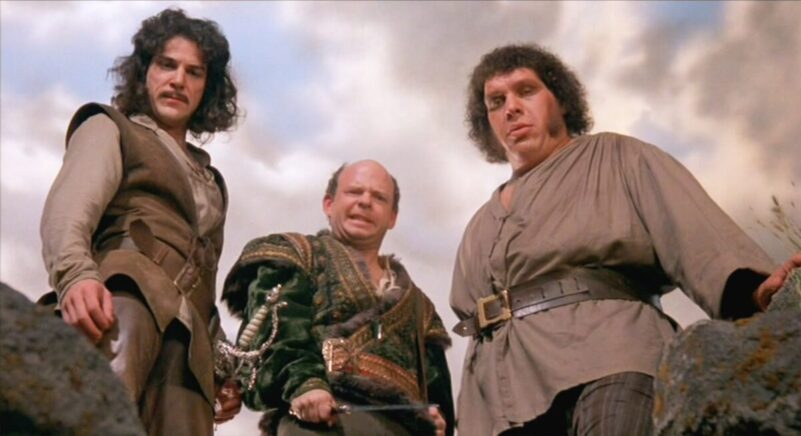
The title The Princess Bride has both a simple and complex root. The simple one being that when author William Goldman asked his daughters what his next story should be about, they each requested a book about a “princess” and a “bride.” Thus, the title of the book was born. But given the novel’s experimental, meta approach, the title also plays a significant role in setting the tone and framing the narrative of the movie. It is a title that immediately invokes the familiar presence of a fairy tale and comments on the act of telling stories and hearing stories.
“Princess” and “Bride” are archetypal figures in such stories, typically representing purity, beauty, and a journey towards love and fulfillment. These two words immediately suggest themes of romance and adventure, and hint a story that revolves around love, marriage, and the trials that come with these experiences. These themes and structures are all common to fairy tales, thus the title suggests a very by-the-numbers story.
But then the title becomes much more interesting when we consider the characters and the focus of the story, as it directly references the film’s main female character, Buttercup, who is both a princess (by her engagement to Prince Humperdinck) and a bride (in her intended marriage to him). This dual role captures her journey and the central conflict of the story: her true love for Westley versus her obligations as a princess. So while the title suggests a focus on a conventional princess character, the film subverts this expectation. Buttercup is not a passive damsel waiting to be rescued—she exhibits agency, depth, and complexity, challenging the traditional roles often assigned to princesses and brides in fairy tales. By subverting what’s typical, Goldman provides a story that challenges our preconceived notions and forces us to remain in step with these uniquely designed characters.
This subversion seems to work on the grandson—essentially the audience surrogate. In the frame story, the title plays a role in the grandson’s initial skepticism about the book his grandfather chooses to read. It sounds like a typical fairy tale, which he assumes won’t interest him, reflecting common reactions to such stories. The film then proceeds to challenge these preconceptions, as characters become counters to the typical archetypes we hear in fairy tales. Thus, the title situates the story within a broader tradition of storytelling: it suggests that timeless tales can exist, can be passed down through generations.
Now it’s your turn
Have more unanswered questions about The Princess Bride? Are there themes or motifs we missed? Is there more to explain about the ending? Please post your questions and thoughts in the comments section! We’ll do our best to address every one of them. If we like what you have to say, you could become part of our movie guide!

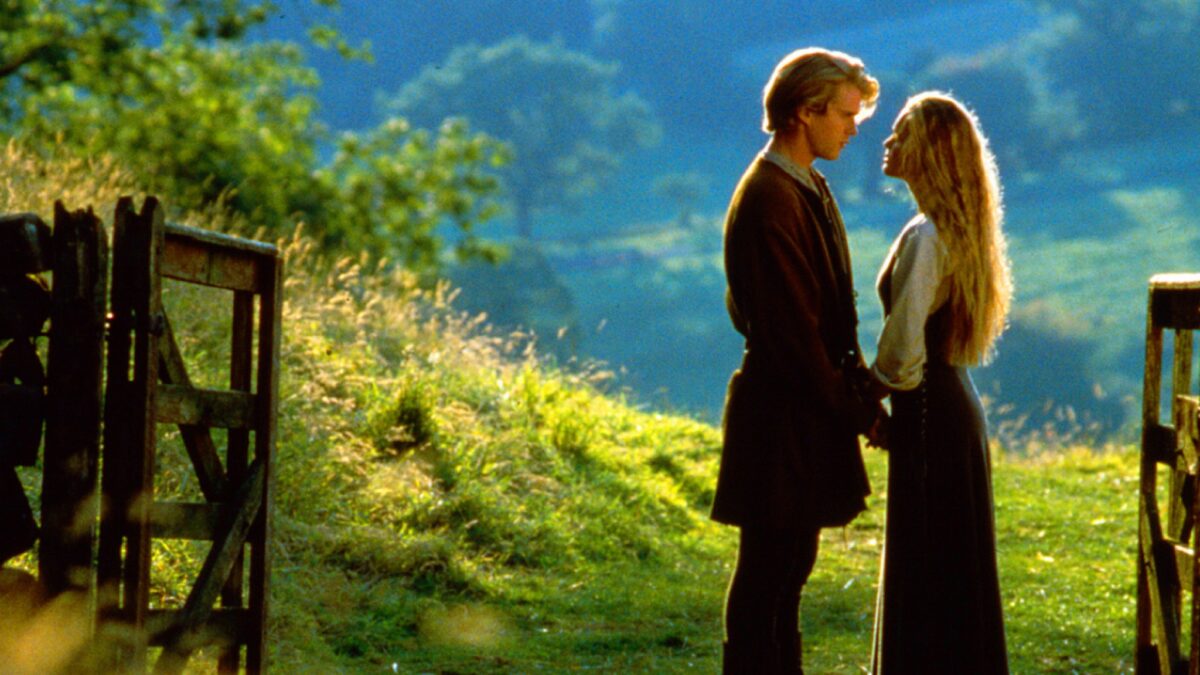
“Despite being physically weakened and unable to stand (an after-effect of the chocolate that brought him back to life), Westley’s sheer willpower and love for Buttercup enable him to confront Humperdinck.”
He was weakened and unable to stand due to being mostly dead all day. It wasn’t because of the chocolate miracle pill.
Yeah, you’re right. Poorly worded. I fixed it. Thank you!